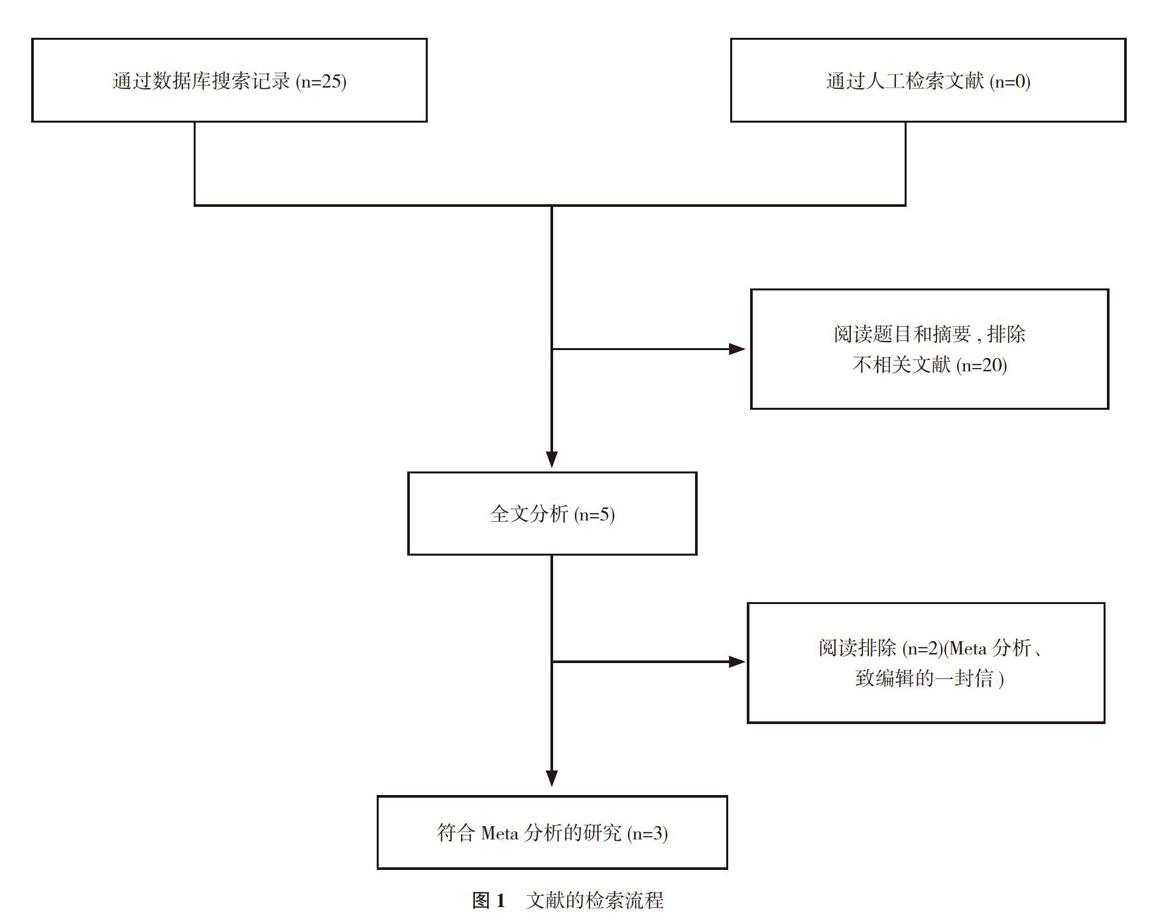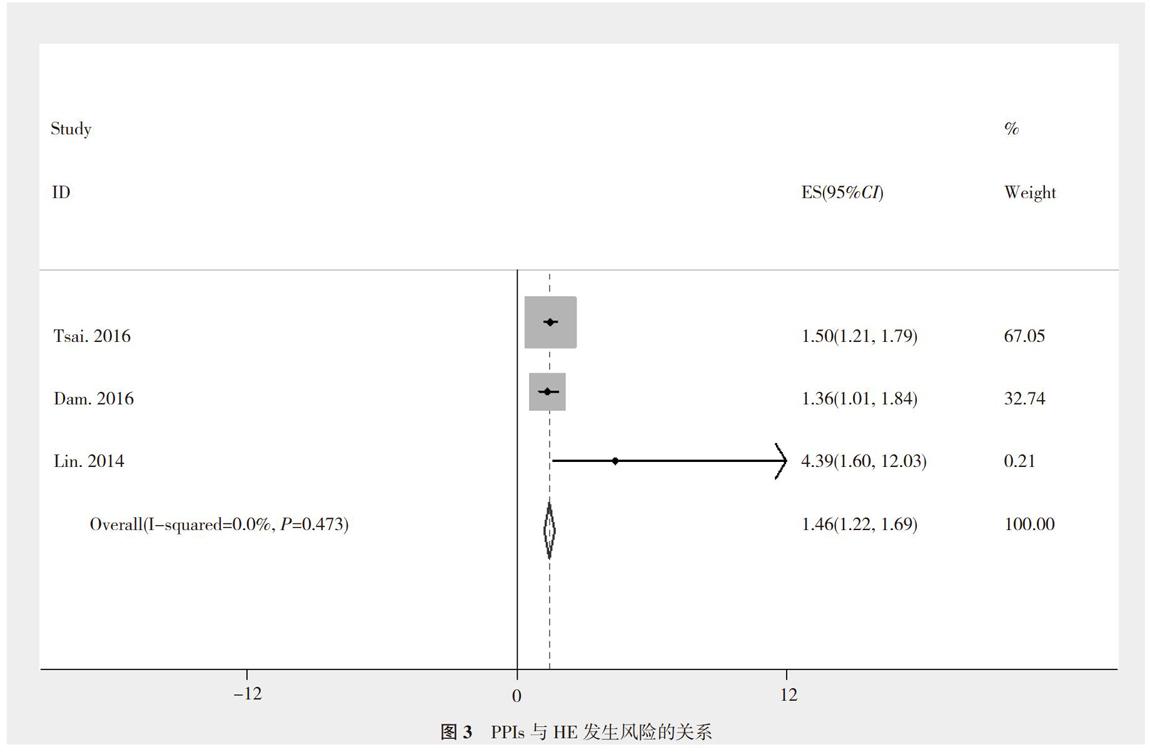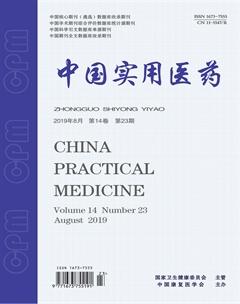质子泵抑制剂与肝性脑病发生风险相关性的Meta分析
张园园 陈惠新



【摘要】 目的 探讨质子泵抑制剂(PPIs)与肝性脑病(HE)发生风险的相关性。方法 检索Medline、Embase数据库、Cochrane Library图书中PPIs与HE发生风险相关性的临床研究, 按照纳入标准筛选文献, 运用STATA13.0软件进行统计分析。结果 PPIs的使用增加了HE的发生风险[OR=1.46, 95%CI=(1.22, 1.69)]。结论 PPIs可能会增加肝硬化及肝衰竭患者HE的发生风险, 这仍有待大规模、多中心的随机对照实验进一步证实。
【关键词】 质子泵抑制剂;肝性脑病;肝硬化
DOI:10.14163/j.cnki.11-5547/r.2019.23.045
肝性脑病是由严重肝功能失调或各种门静脉-体循环分流异常引起的中枢神经系统功能失调综合征[1]。主要临床表现为意识障碍、行为失常和昏迷等[2]。近期研究发现, 肝硬化患者存在肠道微生态紊乱, 也存在小肠细菌过度生长(SIBO)情况, 肠道细菌的过度生长使肠源性含氮物质产生增加, 从而使血浆氨升高, 增加HE的发生风险[3]。PPIs是胃酸异常分泌及酸相关疾病的一线治疗药物。近年来, 越来越多文献报道了PPIs在临床使用中的药物不良反应[4-9]。PPIs抑制胃酸分泌, 提高胃内pH值, 使得某些肠道致病菌定植, 增加胃肠道感染的风险[3]。同时PPIs也会影响肠道微生态环境, 改变细菌的生长, 包括SIBO和移位[3, 10]近期有研究报道使用PPIs会增加HE的发生风险[10-13]。本文将对PPIs与HE发生风险的相关性进行Meta分析, 报告如下。
1 资料与方法
1. 1 资料来源 检索Medline、EMbase数据库、Cochrane图书馆中探讨PPIs与HE发生风险的随机对照试验、队列研究或回顾性研究, 检索年限:从建库至2018年6月。纳入标准:①关于PPIs与HE发生风险的随机对照试验、队列研究或回顾性研究;②纳入研究患者年龄均≥18岁;③研究能提供充分原始数据。排除标准:资料有残缺, 未提供充足原始数据:以临时报告或仅以摘要形式发表的文献;进行研究前患者合并其他严重的系统性或精神疾病。
1. 2 观察指标及数据提取 观察指标为PPIs与HE发生风险的关系。由两名评价员独立提取纳入的临床资料, 包括:①第一作者的名字、发表的时间、文章的类型;②患者的基本资料;③干预措施;④评价指标结果的提取。
1. 3 文献质量评价 根据Newcastle-Ottawa Scale(NOS)文獻质量评价量表对研究进行评价。
2 结果
2. 1 文献检索流程及结果 文献检索的流程见图1。按照纳入和排除标准, 最后共纳入3篇文献。
2. 2 纳入文献的基本资料 纳入的3篇文献中, 2篇来自中国, 1篇来自丹麦。2篇文献的研究对象为肝硬化患者, 另一篇文献的研究对象为慢加急性肝衰竭患者。纳入本研究的患者共3357例。因HE的发病率低, 进行Meta分析时将HR近似等于OR值进行合并。纳入研究的3篇文献的OR值及95%CI分别为:4.392(1.604 , 12.031)、1.36(1.01, 1.84)、1.496(1.206, 1.786)。
2. 3 纳入文献的质量评价 纳入研究3项研究评分均≥5分。
见图2。
2. 4 PPIs与HE发生风险的关系 3篇文献报道了PPIs与HE发生风险的关系, 其异质性检验结果显示:I2=0%, P=0.473, 采用固定效应模型进行Meta分析。结果显示:PPIs的使用增加了HE的发生风险[OR=1.46, 95%CI=(1.22, 1.69)]。见图3。
2. 5 敏感性分析 本次分析的结果是稳定的。PPIs与HE发生风险的关系采用随机效应模型分析的结果[OR=1.46, 95%CI=(1.22, 1.69)]与采用固定效应模型的结果[OR=1.46, 95%CI=(1.22, 1.69)]一致。
3 讨论
PPIs作为胃酸异常分泌及酸相关疾病的一线治疗药物, 能迅速缓解和改善患者因高胃酸分泌引起的相关症状[14, 15]。在临床实践中, PPIs被普遍应用于肝硬化合并食管胃底静脉曲张的患者中, 以减少其消化道出血风险[16-18]。在肝功能衰竭患者中, PPIs的应用也较为常见, 其可以减少胃酸的分泌从而缓解患者消化道不适症状。近期越来越多文献报道了PPIs的不良反应, 如骨折、肺部感染、艰难梭菌感染、自发性腹膜炎等[19, 20]。美国胃肠病协会也于2017年更新了长期使用PPIs的实践建议[4]。
本次Meta分析结果显示:在肝硬化及肝功能衰竭患者中, 使用PPIs会增强HE的发病风险[OR=1.46, 95%CI=(1.22, 1.69)]。研究指出, 肝硬化或肝衰竭患者中存在严重的菌群失调。在这些患者中使用PPIs, 使得胃内的pH值升高, 从而导致SIBO、移位、肠道炎症、肠道蠕动异常等, 这可能增加肠道毒素在门脉系统中吸收, 增加肠源性氨的吸收, 加重机体对氨代谢的负担, 从而增加HE的发病风险, 这仍有待大规模、多中心的随机对照实验进一步证实。
参考文献
[1] Vilstrup H, Amodio P, Bajaj J, et al. Hepatic encephalopathy in chronic liver disease:2014 Practice Guideline by the American Association for the Study of Liver Diseases and the European Association for the Study of the Liver. Hepatology, 2014, 61(3):642-659.
[2] Zhang Y. Recommendations on hepatic encephalopathy in chronic liver disease:2014 practice guideline by the European Association for the Study of the Liver and the American Association for the Study of Liver Diseases. Journal of Clinical Hepatology, 2014, 61(3):642-659.
[3] Dhiman RK. Gut Microbiota, Inflammation and Hepatic Encephalopathy: A Puzzle with a Solution in Sight. Journal of Clinical and Experimental Hepatology, 2012, 2(3):207-210.
[4] Freedberg DE, Kim LS, Yang YX. The Risks and Benefits of Long-term Use of Proton Pump Inhibitors: Expert Review and Best Practice Advice From the American Gastroenterological Association. Gastroenterology, 2017, 152(4):706-715.
[5] Malfertheiner P, Kandulski A, Venerito M. Proton-pump inhibitors: understanding the complications and risks. Nature Reviews Gastroenterology & Hepatology, 2017, 14(12):697-710.
[6] Moayyedi P, Leontiadis GI. The risks of PPI therapy. Nature Reviews Gastroenterology & Hepatology, 2012, 9(3):132-139.
[7] Schoenfeld AJ, Grady D. Adverse Effects Associated With Proton Pump Inhibitors. Jama Intern Med, 2016, 176(2):172-174.
[8] Sheen E, Triadafilopoulos G. Adverse effects of long-term proton pump inhibitor therapy. Dig Dis Sci, 2011, 56 (4):931-950.
[9] Sheen E, Triadafilopoulos G. Adverse Effects of Long-Term Proton Pump Inhibitor Therapy. Dig Dis Sci, 2011, 56(4):931-950.
[10] Betrapally NS, Gillevet PM, Bajaj JS. Gut Microbiome and Liver Disease. Translational Research, 2016(179):49-59.
[11] Lin ZN, Zuo YQ, Hu P. Association of Proton Pump Inhibitor Therapy with Hepatic Encephalopathy in Hepatitis B Virus-related Acute-on-Chronic Liver Failure. Hepatitis Monthly, 2014, 14(3):e16258.
[12] Dam G, Vilstrup H, Watson H, et al. Proton Pump Inhibitors as a Risk Factor for Hepatic Encephalopathy and Spontaneous Bacterial Peritonitis in Cirrhosis Patients With Ascites. Hepatology, 2016, 64(4):1265-1272.
[13] Tsai CF, Chen MH, Wang YP, et al. Proton Pump Inhibitors Increase Risk for Hepatic Encephalopathy in Patients With Cirrhosis in A Population Study. Gastroenterology, 2017, 152(1):134.
[14] Kung YM, Hsu WH, Wu MC, et al. Recent Advances in the Pharmacological Management of Gastroesophageal Reflux Disease. Digestive Diseases and Sciences, 2017, 62(12):3298-3316.
[15] Jain KS, Shah AK, Bariwal J, et al. Recent advances in proton pump inhibitors and management of acid-peptic disorders. Bioorganic & Medicinal Chemistry, 2007, 15(3):1181-1205.
[16] Tripathi D, Stanley AJ, Hayes PC, et al. UK guidelines on the management of variceal haemorrhage in cirrhotic patients. Gut, 2015, 64(11):1680-1704.
[17] Lo EAG, Wilby KJ, Ensom MHH. Use of Proton Pump Inhibitors in the Management of Gastroesophageal Varices: A Systematic Review. Annals of Pharmacotherapy, 2015, 49(2):207-219.
[18] Lodato F, Azzaroli F, Girolamo MD, et al. Proton pump inhibitors in cirrhosis: Tradition or evidence based practice? World Journal of Gastroenterology, 2008, 14(19):2980-2985.
[19] Vries FD, Staa TPV, Leufkens HGM. Proton pump inhibitors, fracture risk and selection bias: three studies, same database, two answers. Osteoporosis International, 2011, 22(5):1641-1642.
[20] Maléth J, Hegyi P. Long-term proton pump inhibitor therapy and osteoporosis. Is there a real danger?Orvosi Hetilap, 2013, 154(26):1005-1009.
[收稿日期:2019-01-04]

